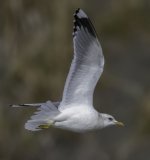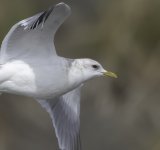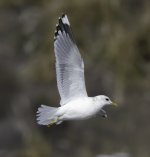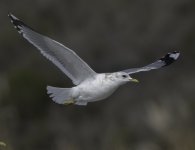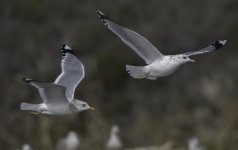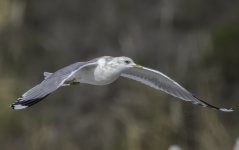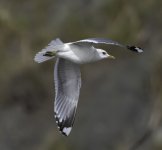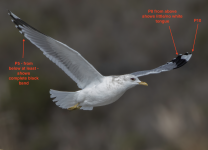So I know this is a long shot but...while birding today in Jenner CA I noticed a "biggish" Mew Gull. I watched it for a while and noted a sloping forehead and a bigger then normal bill. A wave came in and I got some flight photos. Not the best. Now I love birding but I don't entirely have the lingo down. Mirrors and tounge and stuff like that I'm still learning..lol. but I didn't notice that P8 was almost completely black which appears to be a key feature in identifying Kamchatka Gull from the more common brachyrhynchus Mew Gull. I read this article http://gull-research.org/papers/papers8/2016CommonGulls_AdriaensGibbins.pdf and attempted to follow the table laid out for identification. It was somewhat difficult and I am unsure if my photos are good enough to ID the bird from the primaries. I do believe using the article and table points to Kamchatka, but I'm not totally certain. Was looking for some help here. Thanks!!